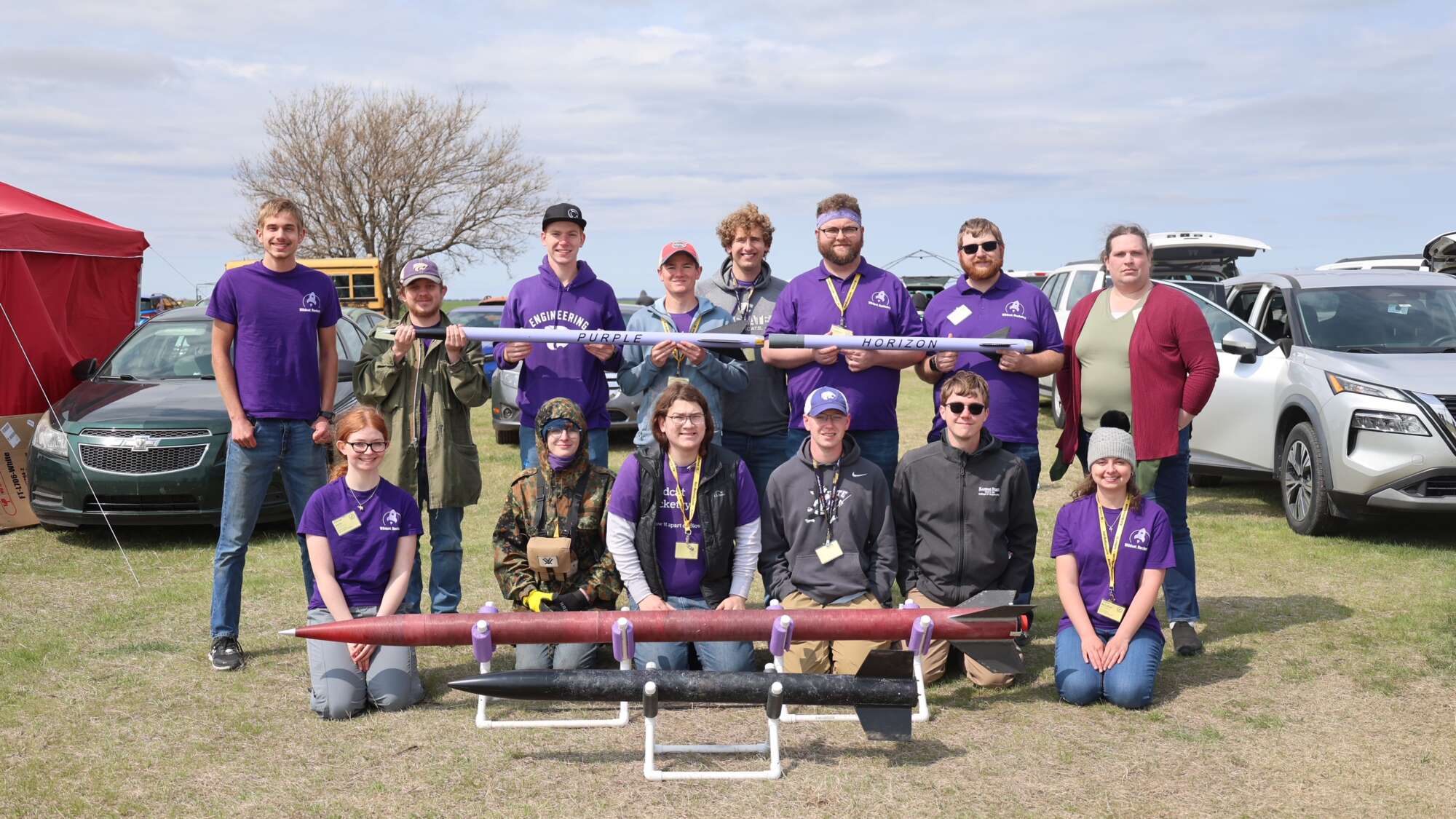K-State’s rocketry club wins national Argonia Cup competition by a long shot.
Your team’s rocket shoots higher and higher into the sky. When the rocket reaches its peak, you wait nervously for the second motor to fire. Your teammate counts, “Three, two, one…”
But nothing happens. Your heart sinks as doubt creeps in. Finally, the second motor kicks in after an abnormally long coast of 14 seconds (the typical coast time is zero to five seconds).
K-State’s Wildcat Rocketry team lived through this exact experience at the Argonia Cup Competition, the national intercollegiate high-power rocketry competition. After team members collected their data, they discovered their rocket had not only flown over 35,000 feet into the air — earning 17,000 points more than the second-place winners — but also broke the world record for altitude using their specific motor type.
“The conditions for our flight ended up being near perfect. It was an ideal flight, but since the rocket coasted for so long, we didn’t think the second motor was going to ignite,” said Hannah Harris, the Wildcat Rocketry public relations officer. “We were all super disappointed, but then we saw a flash of orange as the motor ignited and everyone got really excited!”
The journey to launch
The rocketry club meets twice a week at the Carl R. Ice College of Engineering. However, to build and test rockets, they’ve taken over an abandoned warehouse.
A lot goes into the building of a rocket, from the motors and electronics to the name, size and construction. Perhaps the most important part for a competition rocket is tracking the data. Attached to the rocket is an electronic component that measures apogee (highest height), altitude and acceleration. After the rocket lands, the team retrieves it and plugs the electronics into a computer to gather the data.
“There are a lot of different sizes for flight electronics,” Harris said. “We have a couple in the club, but they are very expensive.”
The Argonia Cup is their biggest competition, but they also have opportunities to launch rockets individually during the semester to gain new certificates at events called “fun flies.” Essentially, once you launch a rocket of a certain motor level successfully, you gain a new certificate.
The rocketry club won K-State’s Day of Giving challenge for most donations for a student club, but, despite that achievement, they are still in need of funds!
Help rocketry club students launch their futures!
By Kate Ellwood
